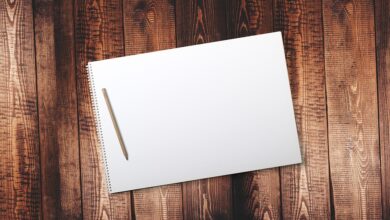
Achieving Work-Life Integration: The Secrets Housed in Your Planner
In today’s fast-paced world, achieving a healthy work-life balance can often feel like an impossible feat. Many of us find ourselves constantly juggling the demands of our jobs, families, and personal lives, leaving us feeling stressed, overwhelmed, and burnt out. However, there is a solution that may hold the key to achieving harmony between our work and personal lives: work-life integration.
Work-life integration is a concept that goes beyond the traditional idea of work-life balance, which suggests that work and personal life are two separate entities that must be kept in equilibrium. Instead, work-life integration recognizes that work and personal life are intertwined and interconnected, and that it is possible to create a seamless flow between the two.
One of the most essential tools in achieving work-life integration is your planner. Your planner is more than just a tool for organizing your daily schedule – it is a powerful tool that can help you prioritize your time, set goals, and create a healthy balance between work and personal life. In this article, we will explore the secrets housed in your planner that can help you achieve work-life integration and live a more fulfilling and balanced life.
1. Set Clear Goals and Priorities
The first step in achieving work-life integration is to set clear goals and priorities for both your work and personal life. Take some time to reflect on what is most important to you and what you want to achieve in both areas. Write down your goals in your planner and break them down into smaller, manageable tasks. By setting clear goals and priorities, you can ensure that you are focusing your time and energy on the things that matter most to you.
2. Schedule Regular Breaks
It can be tempting to try to work non-stop in order to get more done, but this can actually be counterproductive. In order to be productive and maintain a healthy work-life balance, it is important to schedule regular breaks throughout the day. Use your planner to block out time for short breaks, lunch breaks, and time to relax and recharge. This will help you to stay focused and energized throughout the day, and prevent burnout.
3. Create Boundaries
One of the biggest challenges in achieving work-life integration is creating boundaries between work and personal life. It can be all too easy to let work creep into your personal time, or to let personal issues distract you from work. Use your planner to create clear boundaries between work and personal life by scheduling specific times for work and personal activities. For example, you could block out time in the morning for work tasks, and time in the evening for family time or hobbies. By creating boundaries, you can ensure that you are giving equal attention to both work and personal life.
4. Practice Time Management
Effective time management is crucial in achieving work-life integration. Use your planner to schedule your tasks and activities, and allocate specific amounts of time to each task. Prioritize your tasks based on importance and deadlines, and try to focus on one task at a time. Avoid multitasking, as this can lead to decreased productivity and increased stress. By practicing effective time management, you can ensure that you are making the most of your time and achieving a healthy balance between work and personal life.
5. Delegate Tasks
It can be difficult to juggle all of the responsibilities of work and personal life on your own. Don’t be afraid to delegate tasks to others when necessary. Use your planner to identify tasks that can be delegated to colleagues, family members, or friends. By delegating tasks, you can free up more time for yourself and ensure that you are not overwhelmed by the demands of work and personal life.
6. Plan for Self-Care
Self-care is essential in achieving work-life integration. Make sure to schedule time for self-care activities in your planner, such as exercise, meditation, hobbies, or spending time with loved ones. Self-care is crucial for maintaining your physical and mental health, and can help you to feel more balanced and fulfilled in both your work and personal life.
7. Reflect and Adjust
Finally, it is important to regularly reflect on your work-life integration and make adjustments as needed. Use your planner to track your progress towards your goals, and reflect on what is working well and what could be improved. Don’t be afraid to make changes to your schedule or priorities in order to achieve a better balance between work and personal life. By regularly reflecting and adjusting, you can ensure that you are continuously striving towards a more fulfilling and balanced life.
In conclusion, achieving work-life integration is possible by harnessing the power of your planner. By setting clear goals and priorities, scheduling regular breaks, creating boundaries, practicing time management, delegating tasks, planning for self-care, and reflecting and adjusting, you can create a seamless flow between your work and personal life. With the secrets housed in your planner, you can achieve a healthier, more fulfilling, and balanced life.





